右の各写真の中のレンズの配置
左上:Super Six 7.5cm
右上:Xenon 8cm
左下:Biotar 8cm
右下:Primoplan 8cm |
Original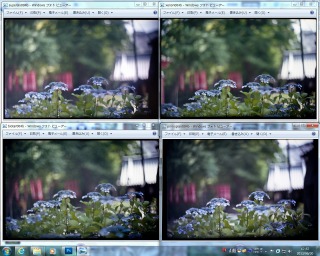 |
Enlargement ①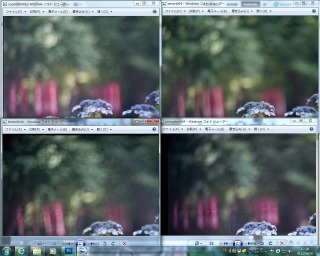 |
Enlargement ②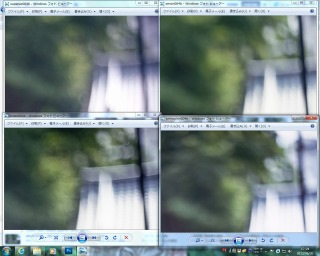 |
Enlargement ③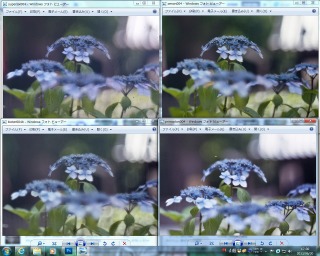 |
Original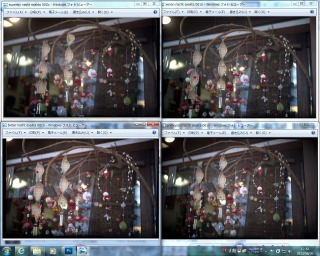 |
Enlargement ①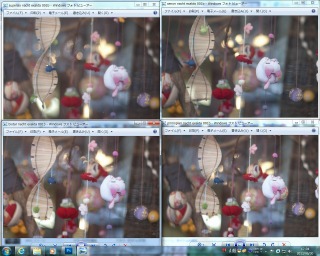 |
Enlargement ②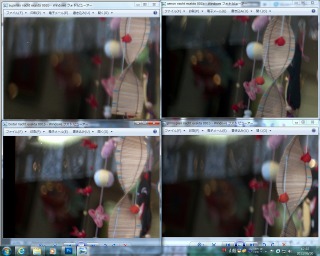 |
Enlargement ③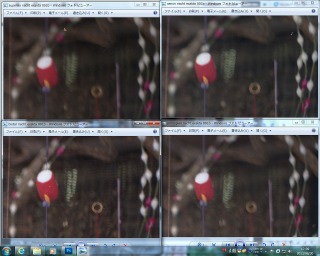 |
|
各レンズの描写比較
ナハト・エキザクタ(ナハト・エクサクタ)のレンズは上記カメラ画像にも映っているような延長アダプターを自作して簡単にEOSデジタルなどでも撮影を楽しむことができますが、今回は描写の比較ということで、周辺部の画像が不可欠であることから、127フィルム(BlueFire
Murano160)を使用して比較しました。
127フィルムは6cm×4.5cmでは撮影枚数が8枚。一つの被写体の比較に4枚使用するので、フィルム1本で2つの比較が可能です。それよりもなにが大変かというと、同じ場所での4本のレンズ交換で、バヨネットではなくスクリュー式なので、次第に腕が疲れてきました。
作例は比較しやすいように、4本のレンズの同一部分の描写を1枚にまとめています。
欄外にレンズ名が表示されているので、そこで特定してください。左上から時計回りにSuper-Six、Xenon、Primoplan、Biotarと並んでいます。
肝心の描写特性ですが、
① どれも素晴らしい立体感を示してくれました。
② 逆光には強くありません。経年変化の曇りも関係していると思います。
現状ではXenonが最もガラスの透明感を保持しているので、写りもクリアでした。
③ 作例は載せませんでしたが、f8程度に絞れば、いずれもよい画像です。
④ 開放でも、中央部のピント部分はすっきりとクリアです。
⑤ 差が大きいのは、開放時の周辺(予想通りですが)で、
(a) 最も2線ボケが強いのが、Biotarでした。
(b) 他の2本のダブルガウス型であるSuper-SixとXenonは、ボケに輪郭は入りますが、
Biotarよりはやわらかく出ています。
その分中央部を含めて球面収差が残されている可能性もあり、有名なSuper-Sixの
ハイライトの滲みもその辺が関係しているように思います。
(c) Super-Sixには強くはありませんが、コマ収差も出ており、特徴的です。
(d) Primoplanは、ボケに輪郭が少なく、とてもやわらかい描写をしています。
その代わりというか、比較的非点収差が出ていて、ボケの形が円周状に流れかかって
います。これはダブルガウス型には見当たりません。
やはり、対称型のダブルガウスと、非対称のトリプレット変形型の特性の違いがよく表れているようです。
You can enjoy taking photo with the 4 lenses of Nacht Exakta more easily
by EOS Digital Camera or others using self-made adapter as you can see
above Camera & Lens Photo. But I used 127 film(Bluefire Murano 160)
for comparing expressions of 4 lenses with specially bokeh around peripheral
part.
You can take 8 photos in one 127 film with 6cmx4.5cm size. You need 4 exposures
to compare 4 lenses, so using one film for 2 comparison. Furthermore it
was so troublesome to change 4 lenses by screwing at the same position
among crowed people.
I gathered 4 examples into one to be able to compare easier. You can see
the name of lens above each photo. From above left, Super-Six, Xenon, Primoplan,
Biotar as clockwise.
The comparison of expression
is,
(1) Each lens shows marvelous three dimensional expressions.
(2) None of them are strong enough againt light beam.
I estimate haze because of their age. Xenon shows rather clear picture
because it has more clear glass condition.
(3) Although no examples, they show very clear pictures
at f8 or more.
(4) At full aperture, the center focused image is
shown sharp for each of them.
(5) Difference is rather bigger at peripheral part(as
expected),
(a) Biotar shows most strong two lines bokeh.
(b) Other two Double Gauss type, Super-Six and Xenon,
shows also lines at the edge of each bokeh but not strong as Biotar. On
the other hand, there might be more spherical aberration remained, I estimate
the famous halo or flare at highlight part of Super-Six lens is related
with this.
(c) Super-Six shows moderate
Coma Aberration which makes its characteristic.
(d) Primoplan shows very tender bokeh alomost without
lines at the edge of bokeh. However, it shows rather more astigmatism which
turns bokeh circumference direction. It can not be seen in photos in other
three Double Gauss types.
The difference of characteristic for two types, Double Gauss
and modified Triplet, is clearly seen through this comparison.
|